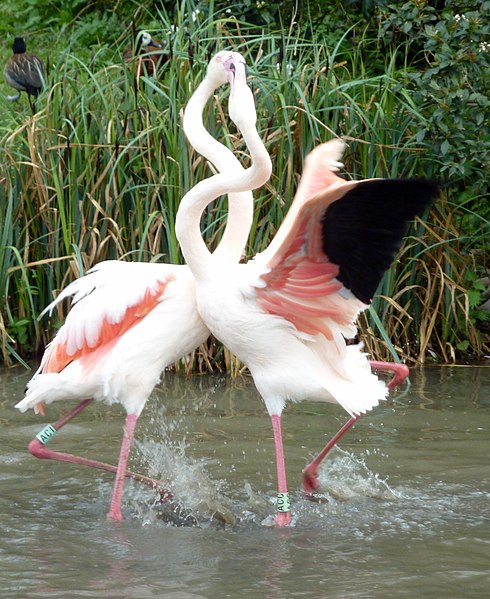Intraspecific competition
Intraspecific competition is an interaction in population ecology, whereby members of the same species compete for limited resources. This leads to a reduction in fitness for both individuals, but the more fit individual survives and is able to reproduce.
By contrast, interspecific competition occurs when members of different species compete for a shared resource. Members of the same species have rather similar requirements for resources, whereas different species have a smaller contested resource overlap, resulting in intraspecific competition generally being a stronger force than interspecific competition.
Male hartebeest locking horns and fiercely defending their territories. An example of direct competition.
Flamingos competing via interference competition, potentially for territories, mates or food.
Population growth against time in a population growing logistically. The steepest parts of the graph are where the population growth is most rapid.
Interspecific competition
Interspecific competition, in ecology, is a form of competition in which individuals of different species compete for the same resources in an ecosystem. This can be contrasted with mutualism, a type of symbiosis. Competition between members of the same species is called intraspecific competition.
Subadult male lion and female spotted hyena in the Masai Mara. The two species share the same ecological niche, and are thus in competition with each other.
Naturalised purple-loosestrife plants growing in the Cooper Marsh Conservation Area, near Cornwall Ontario





